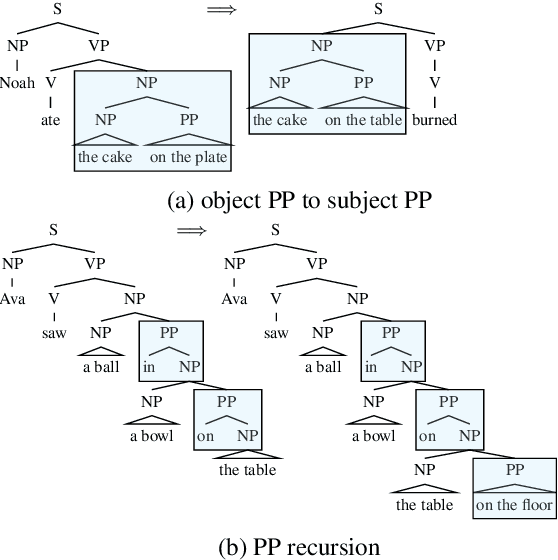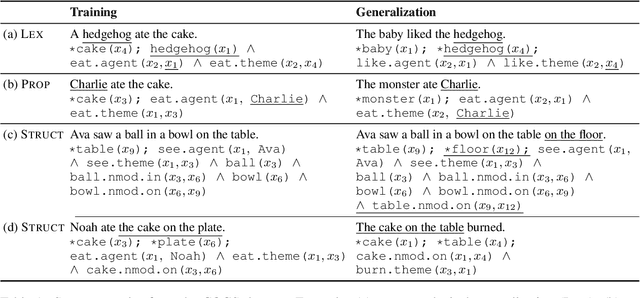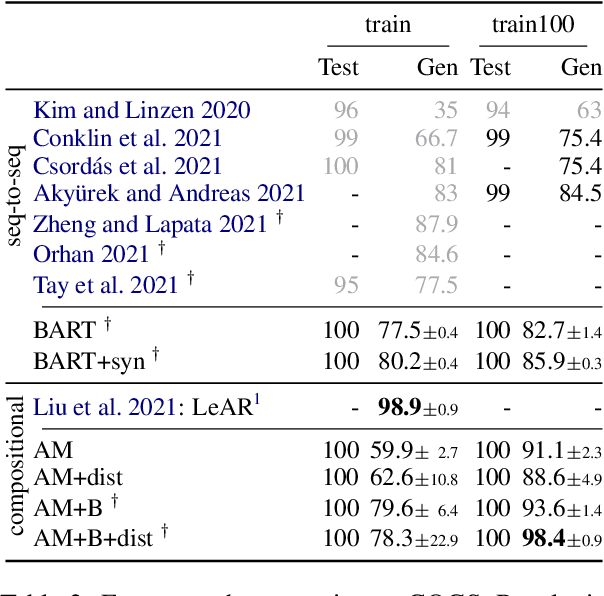Pia Weißenhorn
Compositional Generalization Requires Compositional Parsers
Feb 24, 2022



Abstract:A rapidly growing body of research on compositional generalization investigates the ability of a semantic parser to dynamically recombine linguistic elements seen in training into unseen sequences. We present a systematic comparison of sequence-to-sequence models and models guided by compositional principles on the recent COGS corpus (Kim and Linzen, 2020). Though seq2seq models can perform well on lexical tasks, they perform with near-zero accuracy on structural generalization tasks that require novel syntactic structures; this holds true even when they are trained to predict syntax instead of semantics. In contrast, compositional models achieve near-perfect accuracy on structural generalization; we present new results confirming this from the AM parser (Groschwitz et al., 2021). Our findings show structural generalization is a key measure of compositional generalization and requires models that are aware of complex structure.
Normalizing Compositional Structures Across Graphbanks
Apr 30, 2020



Abstract:The emergence of a variety of graph-based meaning representations (MRs) has sparked an important conversation about how to adequately represent semantic structure. These MRs exhibit structural differences that reflect different theoretical and design considerations, presenting challenges to uniform linguistic analysis and cross-framework semantic parsing. Here, we ask the question of which design differences between MRs are meaningful and semantically-rooted, and which are superficial. We present a methodology for normalizing discrepancies between MRs at the compositional level (Lindemann et al., 2019), finding that we can normalize the majority of divergent phenomena using linguistically-grounded rules. Our work significantly increases the match in compositional structure between MRs and improves multi-task learning (MTL) in a low-resource setting, demonstrating the usefulness of careful MR design analysis and comparison.
 Add to Chrome
Add to Chrome Add to Firefox
Add to Firefox Add to Edge
Add to Edge